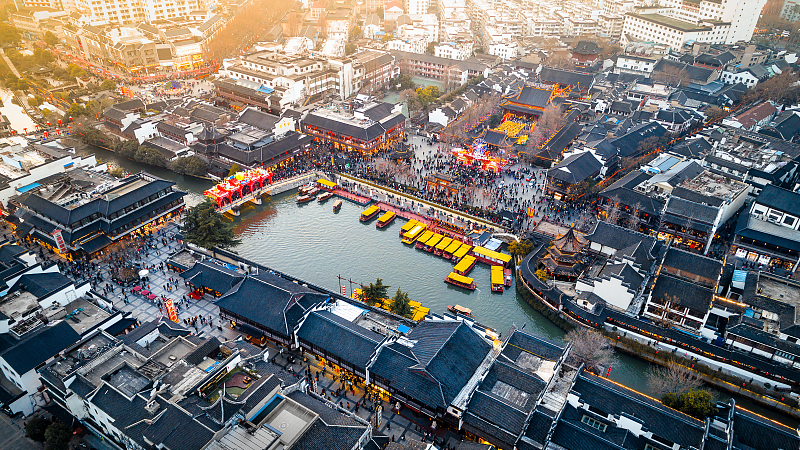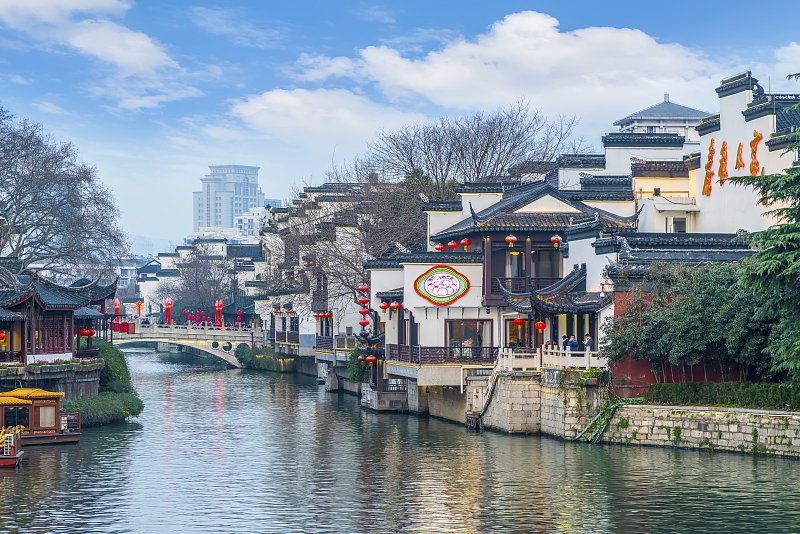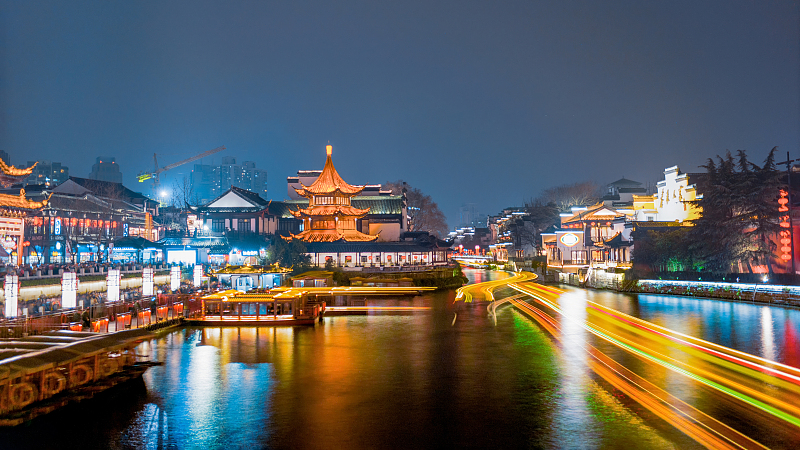Located on the banks of the Qinhuai River, Fu Zi Miao, a Confucius Temple, is a historical treasure highlighting the charm and culture of Nanjing in east China's Jiangsu. It has become a popular tourist spot that enjoys a strong reputation both in China and internationally.

An aerial view of Nanjing Confucius Temple in Jiangsu. /CFP
An aerial view of Nanjing Confucius Temple in Jiangsu. /CFP
The temple is devoted to the worship of Confucius, a Chinese sage whose philosophy and ideas about education are still revered today. It was first constructed at the end of the 4th century but was later destroyed. In 1034 during the Song Dynasty (960 to 1279 AD), the current structure was newly built on the original site. The temple represented the highest national institution of learning in China. It also ranked as one of the four major temples in the country in terms of its collection of literature and is considered a major repository of ancient Chinese culture. As such, it was the cultural and educational center of Nanjing during both the Ming (1368 to 1644 AD) and Qing (1644 to 1911 AD) dynasties.

A view of the Qinhuai River, Nanjing, Jiangsu. /CFP
A view of the Qinhuai River, Nanjing, Jiangsu. /CFP
Nanjing Confucius Temple is a sprawling architectural complex, consisting of major temples, halls, a food street, and so on. Several galleries and museums showcasing this ancient Chinese philosophy as well as local culture are also open for the public.

A night view of the tourism area around Nanjing Confucius Temple in Jiangsu. /CFP
A night view of the tourism area around Nanjing Confucius Temple in Jiangsu. /CFP
The Qinhuai Lantern Fair is an annual festival held here during the Chinese New Year, featuring elaborate lanterns, colorful folk performances like shadow puppetry and stilt walking, as well as traditional Chinese handicrafts like paper-cutting, calligraphy, sculpture and embroidery.
The pedestrian shopping streets around the restored temple buildings should not be missed during any visit. The buildings represent the architectural styles of the Ming and Qing dynasties. Local delicacies, coffee and tea shops, restaurants and souvenir stores mean there is plenty to satisfy all tastes.